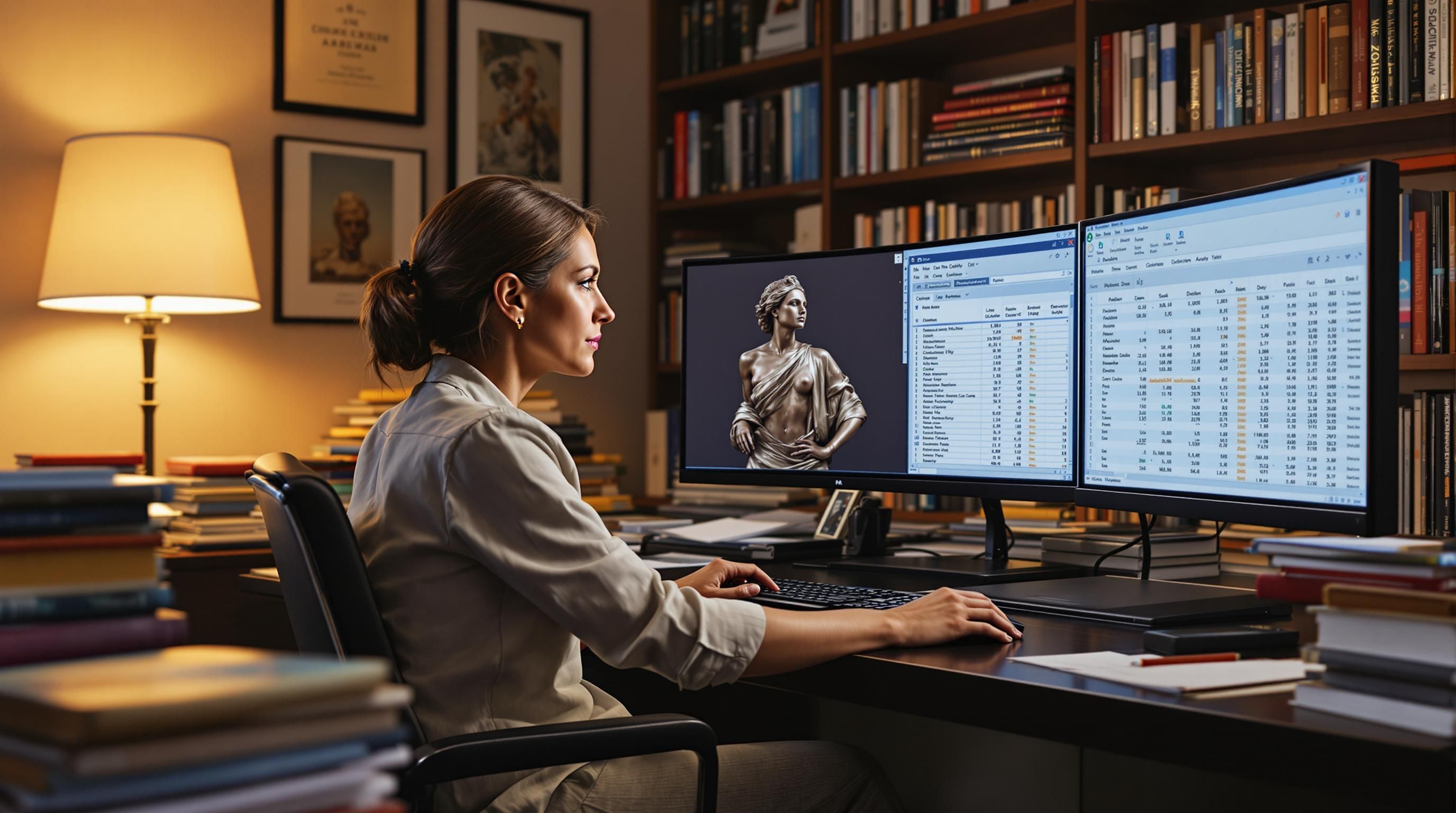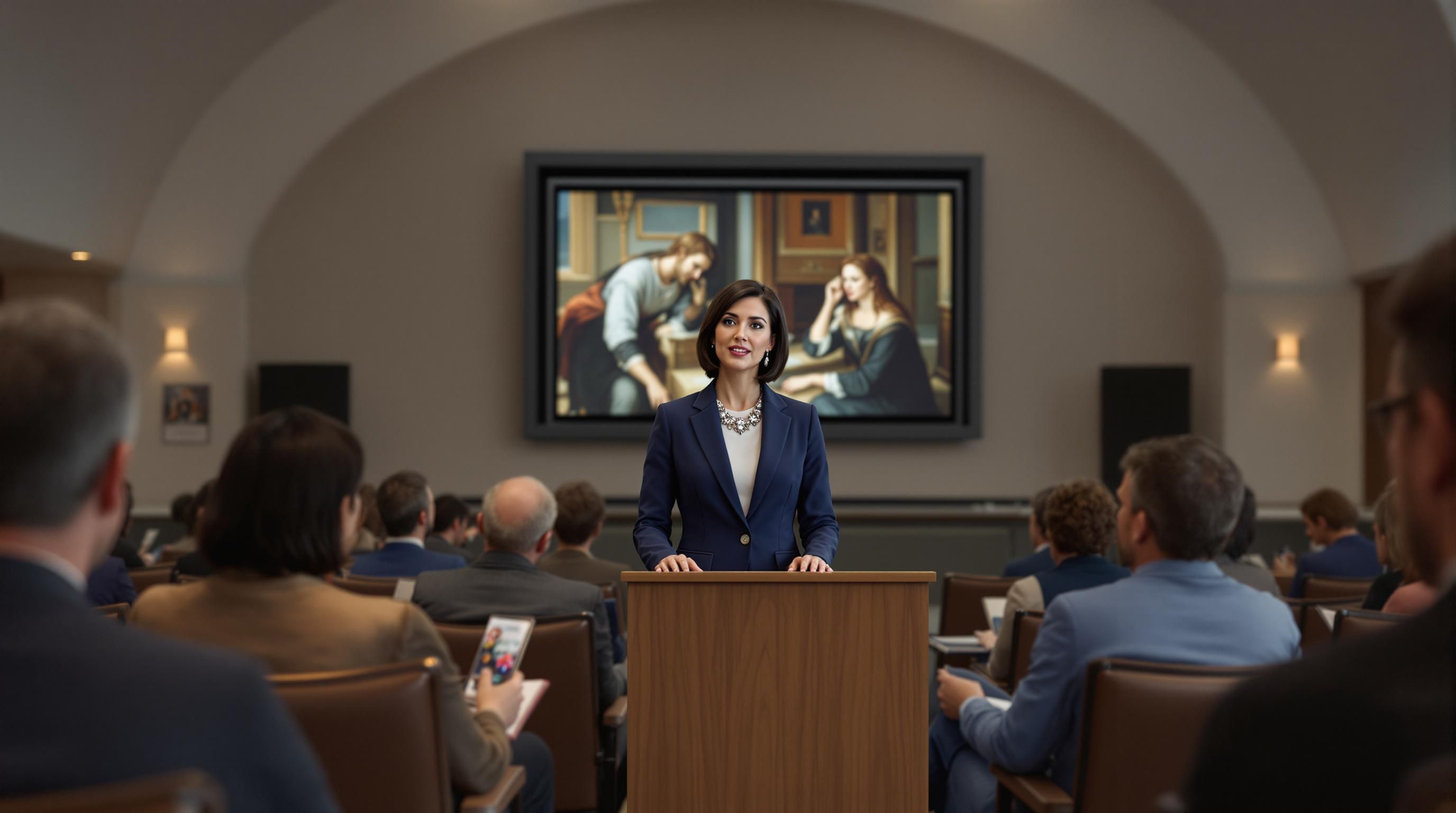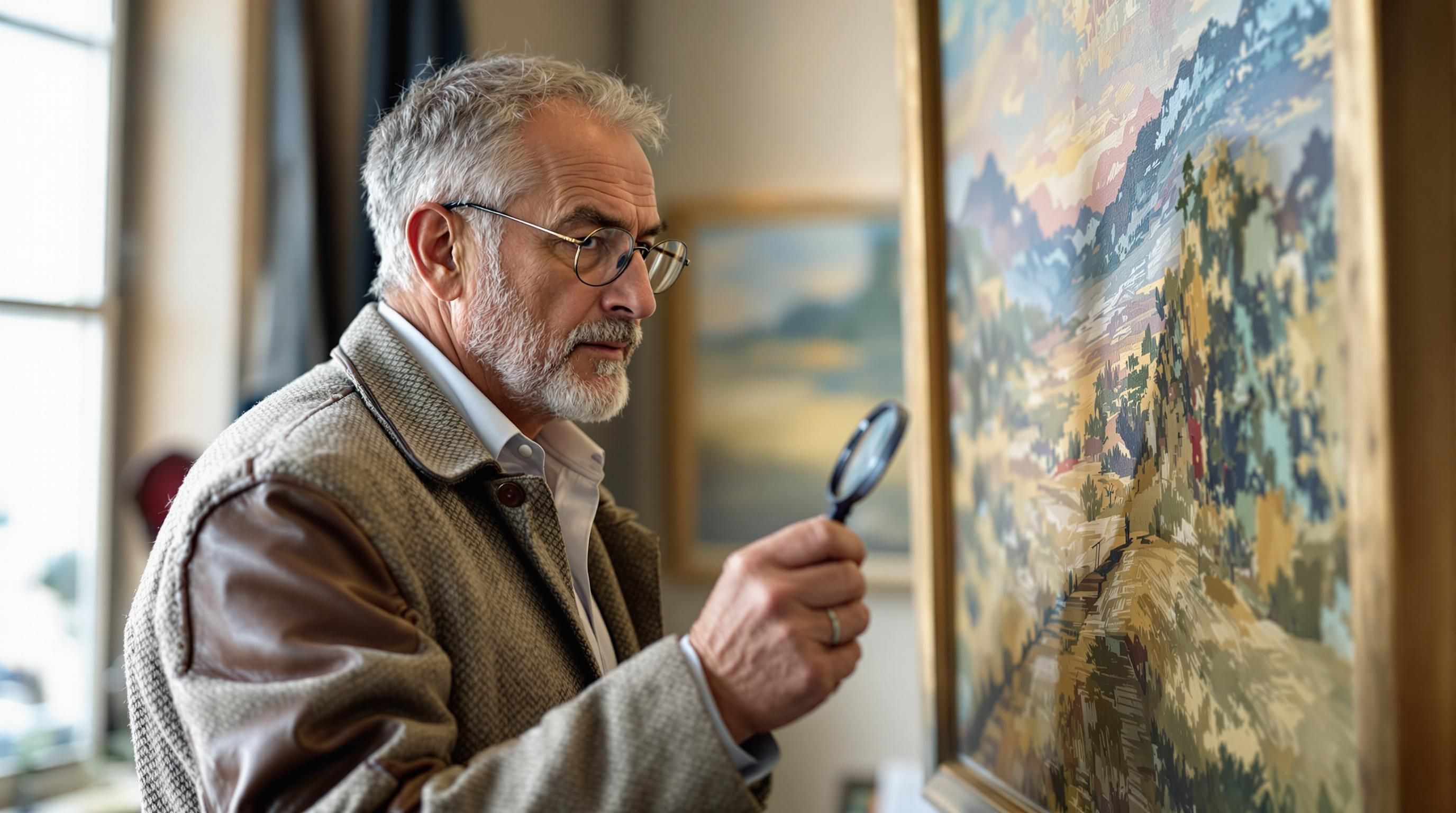Understanding the Role of an Art Appraiser
Art appraisers occupy a specialized niche in the art world, bridging the gap between artistic appreciation and financial valuation. These professionals possess the unique ability to look at a piece of artwork and determine its monetary worth based on a complex set of factors. Their assessments are not mere guesswork but rather detailed analyses based on expertise, market knowledge, and established appraisal methodologies.
An art appraiser’s evaluation goes far beyond simply putting a price tag on a painting or sculpture. According to the Uniform Standards of Professional Appraisal Practice, an appraiser “is expected to perform valuation services competently and in a manner that is independent, impartial, and objective.” This standard establishes art appraisers as neutral third parties who provide unbiased assessments based on their professional expertise.
Art Appraisal Industry at a Glance
What Does an Art Appraiser Do?
Art appraisers have diverse responsibilities that go beyond simply determining a price. Their core functions include:
- Value Assessment: Determining the fair market value, replacement value, or insurance value of artworks
- Authentication: Verifying the authenticity of artwork through various methods
- Condition Reporting: Documenting the physical state of artworks
- Market Analysis: Researching comparable sales and market trends
- Documentation: Creating detailed reports for legal, insurance, or tax purposes
As noted by Career Explorer, “An art appraiser is a professional who determines the value of artworks, antiques, and other cultural items. They use their knowledge of art history, current market trends, and authentication techniques to provide accurate valuations.”

Types of Art Appraisals
Art appraisals are not one-size-fits-all. Different situations call for different types of valuations, and understanding these distinctions is important when seeking appraisal services.
Insurance Appraisals
Insurance appraisals determine the replacement value of artwork in case of theft, damage, or loss. These appraisals typically reflect retail replacement costs rather than what you might receive if selling the piece.
According to Sparks Gallery, “Insurance appraisals are typically higher than fair market value appraisals because they account for the cost of replacing the artwork with a similar piece in a retail setting.”
Fair Market Value Appraisals
Fair market value (FMV) appraisals determine what a willing buyer would pay a willing seller when neither is under pressure to complete the transaction. These are commonly used for:
- Estate planning and settlements
- Tax deductions for charitable donations
- Divorce settlements
- Business asset valuations
Liquidation Value Appraisals
These appraisals determine the value when artwork must be sold quickly, often resulting in lower valuations than fair market appraisals.
Estate Appraisals
Estate appraisals are conducted when someone passes away and their art collection needs to be valued for estate tax purposes or division among heirs.
When You Need an Art Appraisal
Check applicable situations where professional art appraisal is recommended
- Insuring your art collection
- Donating artwork to charity
- Settling an estate with valuable art
- Dividing assets during divorce
- Selling significant artwork
- Verifying authenticity of a purchase
- Determining value for business asset listings
Qualifications and Expertise of Art Appraisers
Becoming a qualified art appraiser requires extensive education, training, and practical experience. Unlike some professions, there is no single licensing body for art appraisers in the United States. However, professional appraisers typically follow a path that includes:
Educational Background
Most art appraisers hold at least a bachelor’s degree in relevant fields such as:
- Art history
- Fine arts
- Museum studies
- Art conservation
- Business with specialization in art markets
According to Learn.org, “As an art appraiser, you’ll analyze a piece of art using a wide assortment of resources, such as books, photographs and samples of other artwork.” This requires a strong foundation in art history and visual analysis.
Professional Certification
Reputable art appraisers typically hold certifications from one or more of these professional organizations:
- American Society of Appraisers (ASA) - Offers the Personal Property designation with specialization in Fine Arts
- International Society of Appraisers (ISA) - Provides certified and accredited member designations
- Appraisers Association of America (AAA) - Offers certified and accredited designations
These organizations require members to complete coursework, pass examinations, submit appraisal reports for peer review, and adhere to ethical standards.
Continuing Education
Art markets evolve constantly, making continuing education essential. Professional appraisers regularly:
- Attend workshops and conferences
- Study market trends and auction results
- Network with other art professionals
- Update their knowledge of authentication techniques
- Stay current with changes in appraisal standards and practices
Specialized Knowledge Areas
Effective art appraisers develop expertise in multiple areas:
- Art History: Understanding periods, movements, and artistic significance
- Authentication Methods: Knowledge of technical analysis tools and provenance research
- Market Analysis: Understanding of price determinants and market trends
- Legal and Ethical Standards: Familiarity with regulations governing appraisals
- Condition Assessment: Ability to identify restoration, damage, and conservation needs
Art Appraiser Salary Ranges
Annual compensation varies by experience, location, and employment type
</tbody>
</table>
How Art Appraisers Determine Value
Art valuation is both an art and a science. Professional appraisers employ systematic approaches to determine value based on multiple factors:
Authentication
Before valuing a work, appraisers must verify its authenticity. This may involve:
- Signature verification
- Technical analysis (X-ray, infrared reflectography, pigment analysis)
- Stylistic analysis
- Provenance research
- Consultation with experts or the artist’s foundation/estate
As TASA notes, “An appraisal is a legal document; it is as important as a will. It is the only way to accurately describe the value of your artwork.”
Provenance Assessment
Provenance refers to the documented history of ownership. Strong provenance can significantly increase value by:
- Confirming authenticity
- Adding historical significance
- Establishing clear title
- Connecting the work to notable collectors or institutions
According to a Reddit discussion on art appraisals, “Provenance & Documentation: Appraisers look at the history of the piece—who created it, when, and whether it’s part of a series or collection.”
Condition Evaluation
The physical condition of artwork significantly impacts its value. Appraisers examine:
- Structural integrity
- Surface condition
- Evidence of restoration or conservation
- Damage or deterioration
- Original versus altered state
Market Analysis
Appraisers analyze recent sales of comparable works by:
- Researching auction results for similar works
- Examining gallery and dealer prices
- Analyzing market trends for the artist or genre
- Considering economic factors affecting the art market
- Evaluating collector demand
Artist’s Career Stage and Reputation
The artist’s standing in the art world influences valuation:
- Career trajectory
- Exhibition history
- Museum representation
- Critical reception
- Historical significance
- Current market activity
Physical Characteristics
The physical attributes of the artwork matter:
- Size and scale
- Medium and materials
- Techniques employed
- Rarity
- Date of creation
Subject Matter and Aesthetic Quality
Subjective but important factors include:
- Subject matter desirability
- Aesthetic quality
- Artistic innovation
- Cultural significance
- Relationship to artist’s body of work
The Marshall Gallery explains that “An art appraisal is an estimate of the value of an artwork. This can be done for a number of reasons, such as insurance purposes, tax considerations, or estate planning.”
The Art Appraisal Process
- Initial Consultation
Client Meeting
The appraiser discusses the client's needs, purpose of the appraisal, and examines the artwork to determine scope of work. - Physical Examination
Artwork Inspection
Detailed examination of the artwork, including measurements, condition assessment, signature verification, and photographic documentation. - Research Phase
Market Analysis
Research into the artist's market, comparable sales, provenance, exhibition history, and other factors affecting value. - Valuation
Value Determination
Analysis of all collected data to determine the appropriate value based on the appraisal purpose. - Report Preparation
Documentation
Creation of a comprehensive appraisal report including description, valuation, methodology, and supporting documentation.
When to Hire an Art Appraiser

Knowing when to engage a professional art appraiser is essential for collectors and art owners. Here are key situations that warrant professional appraisal services:
Insurance Coverage
When insuring valuable artwork, insurers typically require professional appraisals to:
- Establish correct coverage amounts
- Document condition before any damage occurs
- Provide proof of value in case of claims
- Update valuations as art market conditions change
According to the Museum of Modern American Art, “Art appraisers bring expertise in evaluating artworks and understanding the nuances of the art market,” which is crucial for proper insurance coverage.
Estate Planning and Settlement
Professional appraisals are necessary when:
- Creating an estate plan that includes valuable art
- Settling an estate after someone passes away
- Dividing assets among heirs
- Determining estate tax obligations
Charitable Donations
When donating artwork valued above $5,000 to a non-profit organization:
- The IRS requires a qualified appraisal by a qualified appraiser
- The appraisal must be conducted no earlier than 60 days before the donation
- Documentation must be attached to your tax return
The David Barnett Gallery notes that appraisers follow the “Uniform Standards of Professional Appraisal Practice” which ensures compliance with IRS requirements.
Buying or Selling Art
Appraisals provide valuable information when:
- Determining appropriate asking prices
- Evaluating fair purchase offers
- Understanding investment potential
- Planning sales strategies
- Preparing for auction consignment
Divorce and Asset Division
When marriages end, art collections often need to be:
- Inventoried and appraised
- Equitably divided
- Liquidated for asset distribution
Legal Disputes
Art appraisers may serve as expert witnesses in:
- Insurance claim disputes
- Authentication controversies
- Ownership conflicts
- Fraud allegations
- Damage assessments
Business Purposes
Companies with art collections may require appraisals for:
- Corporate asset valuation
- Financial reporting
- Loan collateral
- Leasing arrangements
According to ZipRecruiter, “As an art appraiser, you calculate the value of a piece of art. Your duties include weighing all the factors that go into such a calculation,” which is essential for businesses with art assets.
Regular Collection Updates
Even without a specific transaction, collectors should consider:
- Updating appraisals every 3-5 years
- Revaluing after significant market changes
- Reassessing after conservation or restoration work
- Updating documentation for newly discovered information
How to Choose the Right Art Appraiser
Finding the right art appraiser for your specific needs is crucial. Here are key considerations when selecting an art appraiser:
Verify Professional Credentials
Look for appraisers with recognized credentials:
- Membership in professional organizations (ASA, ISA, AAA)
- Compliance with Uniform Standards of Professional Appraisal Practice (USPAP)
- Specialized training in relevant art categories
- Regular continuing education
Check Specialization Areas
Art is diverse, and expertise is often specialized:
- Match the appraiser’s specialty with your artwork type
- For unusual or niche collections, find someone with specific expertise
- Consider geographical specialization for regional art
Evaluate Experience and Track Record
Research the appraiser’s background:
- Years of professional experience
- Types of appraisals regularly conducted
- Client testimonials or references
- Professional reputation in the art community
Understand Fee Structures
Legitimate appraisers are transparent about fees:
- Fees should be based on time and expertise, not artwork value
- Get a clear estimate before proceeding
- Understand what the appraisal package includes
- Be wary of appraisers who offer to purchase items they appraise (conflict of interest)
Review Sample Reports
Ask to see sample appraisal reports (with confidential information redacted):
- Comprehensive documentation
- Clear methodology explanations
- Supporting market data
- Professional presentation
Verify Independence
Ensure the appraiser has no conflicts of interest:
- No financial interest in the outcome
- No connection to potential buyers or sellers
- Independent from other parties in the transaction
Confirm Purpose Alignment
Make sure the appraiser has experience with your specific appraisal purpose:
- Insurance appraisals
- Estate valuations
- Charitable donation appraisals
- Litigation support
According to Jobs Community from Kaplan, “An art appraiser is a professional who possesses the expertise to evaluate and determine the value of artworks. This role requires an in-depth knowledge of art history, current market trends, and authentication methods.”
Essential Art Appraisal Resources
American Society of Appraisers
Professional organization offering appraiser search tools, certification information, and educational resources for personal property appraisers specializing in fine art.
International Society of Appraisers
Member organization providing appraiser directories, educational programs, and standards for professional art and antique appraisers.
Appraisers Association of America
Professional association offering certification, education, and a find-an-appraiser directory for qualified art and antique appraisers.
USPAP Standards
Official site for the Uniform Standards of Professional Appraisal Practice, providing the ethical and performance standards for all appraisers.
IRS Publication 561: Determining the Value of Donated Property
Official IRS publication outlining requirements for appraisals when donating valuable property, including artwork, to charitable organizations.
Art Appraisal Guide - Sparks Gallery
Comprehensive guide to understanding fine art appraisal, including types of appraisals, how they work, and why they're needed.
Museum of Modern American Art: Art Appraisal Guide
Detailed insights into the art appraisal process, methodologies, and key considerations for accurate art valuations.
David Barnett Gallery: How Art Appraisal Works
Gallery perspective on the art appraisal process, including what to expect when having artwork professionally appraised.
Common Questions About Art Appraisers
How much does an art appraisal typically cost?
Art appraisal fees vary widely based on several factors:
- The appraiser’s experience and credentials
- The complexity of the artwork being evaluated
- The purpose of the appraisal
- The detail required in the appraisal report
- The number of items being appraised
Most professional appraisers charge either an hourly rate (typically $100-$400 per hour) or a flat fee per item. For a single artwork, expect to pay between $250-$1,000 for a thorough appraisal from a qualified professional. More complex appraisals or those requiring extensive research may cost more.
It’s important to note that reputable appraisers do not base their fees on the value of the artwork (percentage-based fees), as this would create a conflict of interest.
What's the difference between an art appraiser and an art authenticator?
While there is some overlap in their skills, art appraisers and authenticators serve different primary functions:Art Appraisers:
- Determine the monetary value of artwork
- Consider market factors, condition, provenance, and authenticity
- Produce legal documents for insurance, tax, or estate purposes
- Usually have broader knowledge across multiple art categories
Art Authenticators:
- Focus specifically on verifying the genuine authorship of artwork
- May use scientific methods (pigment analysis, carbon dating, etc.)
- Often specialize in a particular artist or period
- May work with artist foundations or authentication committees
- Do not necessarily provide valuation services
Many professional art appraisers include authentication as part of their valuation process, but dedicated authenticators typically have more specialized technical expertise for difficult cases.
How long does a professional art appraisal take?
The timeline for completing a professional art appraisal varies based on several factors:
- For a single item with good documentation, an appraiser might complete the process in 1-2 weeks
- For more complex works requiring extensive research, the process could take 3-4 weeks
- For large collections, appraisals may take several months to complete thoroughly
The appraisal process includes:
- Initial examination and documentation of the artwork
- Research into the artist’s market and comparable sales
- Analysis of provenance and condition
- Report writing and compilation of supporting materials
If you need an appraisal by a specific deadline (such as for tax filings), it’s advisable to contact appraisers well in advance.
How often should I have my artwork reappraised?
Art values can change significantly over time due to market fluctuations, changes in an artist's reputation, or shifts in collector interests. Generally, it's advisable to have valuable artwork reappraised:
- Every 3-5 years for insurance purposes
- After significant market events affecting the artist or genre
- Following major conservation or restoration work
- When new information about the artwork becomes available
- Before selling or donating the piece
- After significant changes in the artist’s career status (museum acquisitions, major exhibitions, etc.)
Insurance companies often require updated appraisals periodically to maintain appropriate coverage for valuable art collections.
Can I get an art appraisal online without showing the artwork in person?
While traditional appraisals involve in-person examination, remote or online appraisals have become more common, particularly for initial estimates or when physical access is challenging. However, there are important limitations to consider:Remote appraisal possibilities:
- Preliminary valuations based on photographs and documentation
- Value ranges rather than precise figures
- Updates to previous in-person appraisals
- Research on comparable sales
Limitations of online appraisals:
- Cannot thoroughly assess condition issues that may be visible only in person
- May miss details about materials, techniques, or alterations
- More difficult to authenticate signatures or detect forgeries
- May not satisfy requirements for insurance, tax, or legal purposes
For valuable artwork or when a legally binding appraisal is needed, an in-person examination by a qualified appraiser is still the recommended approach. However, online preliminary consultations can be useful for determining whether a full appraisal is warranted.
What information should I have ready before meeting with an art appraiser?
To make the appraisal process more efficient and potentially reduce costs, prepare the following information before meeting with an appraiser:
- Artist’s name, title of the work, and date of creation (if known)
- Medium and dimensions
- Provenance (ownership history)
- Purchase information (date, price, and source)
- Exhibition history
- Any documentation of authenticity (certificates, gallery records, etc.)
- Previous appraisals or valuations
- Conservation or restoration history
- Insurance documentation
- Photographs of the front, back, and any signatures or markings
- Clear explanation of why you need the appraisal (purpose)
The more documentation you can provide, the more accurate and efficient the appraisal process will be. However, don’t worry if you don’t have all this information—part of an appraiser’s job is to research missing details.
What's the average salary for an art appraiser?
Art appraiser salaries vary widely based on several factors:
- Experience level: Entry-level appraisers might earn $35,000-$45,000 annually, while those with 10+ years of experience can earn $75,000-$120,000+
- Geographic location: Appraisers in major art markets like New York or Los Angeles typically earn more
- Credentials: Certified appraisers with recognized professional designations command higher fees
- Specialization: Expertise in high-value or niche collecting areas can lead to premium rates
- Employment type: Independent consultants may earn more than those employed by auction houses or galleries, but with less stability
According to industry data, the median salary for art appraisers in the United States ranges from $55,000 to $65,000 annually. Independent appraisers who build strong reputations and client bases may earn significantly more through consulting fees.
How do I become an art appraiser?
Becoming a qualified art appraiser typically involves several steps:
Education: Obtain a bachelor’s degree or higher in art history, fine arts, or a related field.
Knowledge Building: Develop expertise in specific art categories through coursework, research, and practical experience.
Initial Experience: Gain practical experience through:
- Internships at museums, galleries, or auction houses
- Working as an assistant to established appraisers
- Positions in art galleries or auction houses
- Museum curatorial roles
Professional Training: Complete specialized appraisal courses through organizations like:
- American Society of Appraisers (ASA)
- International Society of Appraisers (ISA)
- Appraisers Association of America (AAA)
Certification: Earn professional designations by:
- Completing required coursework
- Passing examinations
- Submitting appraisal reports for peer review
- Demonstrating years of experience
- Adhering to ethical standards and USPAP requirements
Continuing Education: Maintain certification through ongoing education and regular USPAP updates.
Business Development: Build a client base through networking, specialty development, and professional reputation.
The process typically takes 5-7 years from beginning education to achieving professional certification.
Conclusion: The Value of Professional Art Appraisal
Professional art appraisers occupy a unique position at the intersection of art scholarship, market analysis, and legal documentation. Their specialized knowledge provides clarity and structure in the often subjective world of art valuation.
Whether you’re seeking insurance coverage for a cherished collection, planning your estate, making a charitable donation, or navigating a complex transaction, a qualified art appraiser offers essential expertise that protects your interests and ensures compliance with legal and financial requirements.
When selecting an appraiser, take time to verify credentials, check specializations, and understand fee structures. The right professional partnership can help you make informed decisions about your art collection while establishing proper documentation for its value.
As the art market continues to evolve with new technologies, changing tastes, and global influences, the role of professional appraisers remains central to maintaining transparency, fairness, and trust in art transactions. Their commitment to ethical standards and objective analysis provides stability in a market often driven by subjective factors and emotional connections.
By understanding what art appraisers do and when to engage their services, you can better protect your art investments and make more informed decisions about your collection.
Get a Professional Appraisal
Unsure about your item’s value? Our certified experts provide fast, written appraisals you can trust.
- Expert report with photos and comps
- Fast turnaround
- Fixed, upfront pricing
No obligation. Secure upload.
| Category | Price | Notes |
|---|---|---|
| Entry-Level Appraiser | $35,000-$45,000 | 0-3 years experience |
| Mid-Career Appraiser | $45,000-$75,000 | 4-9 years experience |
| Senior Appraiser | $75,000-$120,000+ | 10+ years experience |
| Independent Consultant | $60,000-$150,000+ | Varies by client base and specialty |




